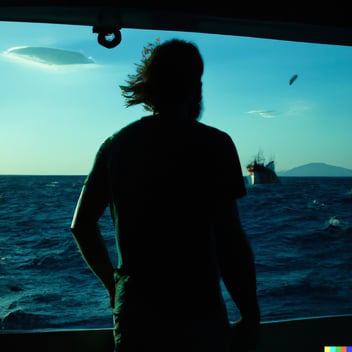Hey there fellow strategists and thinkers! I’m here to share Craig Martin’s deep dive into how we can leverage system dynamics digital twin technology to balance competing objectives in a business environment, using Stella Architect. Trust me, this is exactly what your business strategy has been crying out for!
The Battle of Competing Objectives in Business Strategy
Picture this; we're in the throes of constructing business models and strategies. It's a battlefield where different objectives are pulling us in various directions. Craig calls attention to the human limitation in processing vast arrays of data at a given moment, enter system dynamics digital twin technology to our rescue!
Creating a Digital Twin with Stella Architect
Craig introduces us to Stella Architect, a tool that helps us model and simulate a system to strike that delicate balance between disparate objectives. Let's delve into a hands-on experiment where Craig uses a hypothetical fishing village scenario to illustrate this.
Scenario Breakdown
- Objective 1: Sustain a profitable fishing venture.
- Objective 2: Maintain a healthy fish stock.
Sounds simple enough, right? Not quite. Craig shows that traditional "fail fast, learn fast" approaches won’t cut it here due to the catastrophic real-world consequences.
Dynamic Modeling & Simulation
Craig crafts a model using Stella to monitor fish stock over 40 years while experimenting with different leverages such as:
- Fish catch per ship
- Number of ships at sea
Through trial and error, he pinpoints that the usual approaches end up depleting the fish stock.
Introducing Time as a Variable
Here's where it gets interesting! Craig introduces a pause interval every four years to re-evaluate and adjust strategies dynamically. It's about giving the system a 'breather', to rebound and regain its balance.
But wait, there’s more! Craig moves towards higher frequency interventions, envisioning policies or technologies that could aid in frequent assessments for a more sustained balance.
Harnessing the Power of Algorithm
The Stella Architect doesn't just stop at simulations; it can run tests to find the optimal solution. Craig sets it to maximize fish stock while also keeping a considerable number of ships at sea. The system dynamically finds the sweet spot balancing both objectives effectively.
Automated Calibration for The Win
As we reach the climax of this experiment, Craig introduces an automated calibration mechanism. This self-adjusting marvel automatically alters the fishing strategy based on real-time data, hitting that home run with a balanced fish stock and a steady profit line.
Tweaking the Dynamics
Before we wind down, Craig tweaks the model to monitor trends annually instead of every five years, illustrating that a higher monitoring frequency can foster a healthier balance between profitability and sustainability.
The Takeaway
- Business processes: This simulation hints at the need for structures and technologies that monitor various parameters dynamically.
- Understanding ripple effects: Recognizing that a single change can have wide-reaching consequences is vital.
- Detailed approach: Crafting business and operating models demands an intricate understanding of the system dynamics to foresee the implications of your decisions.
Craig’s deep dive into system dynamics using Stella Architect isn't just a masterclass in business strategy; it's a lesson in foresight, strategy, and sustainable decision-making.
And there you have it, the epic voyage into the world of system dynamics with Craig Martin guiding us. It’s like throwing a pebble into a pond, where every decision has a ripple effect; a fascinating journey into understanding how to balance competing objectives meticulously, effectively, and sustainably.
Stay tuned as we delve even deeper, exploring the causal loop diagrams and archetypes of system dynamics in the upcoming series. Because as we've learned from Craig, understanding the intricate weave of system dynamics isn't just good business sense; it's essential to crafting strategies that stand the test of time!
Until next time, keep those strategic minds buzzing!




